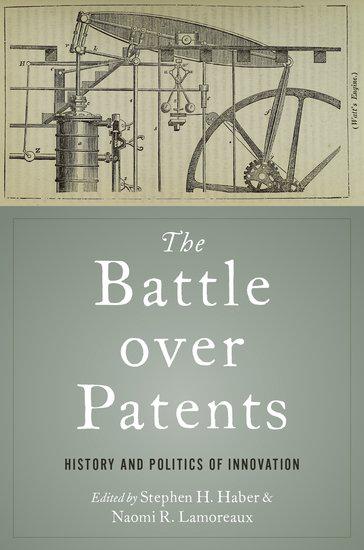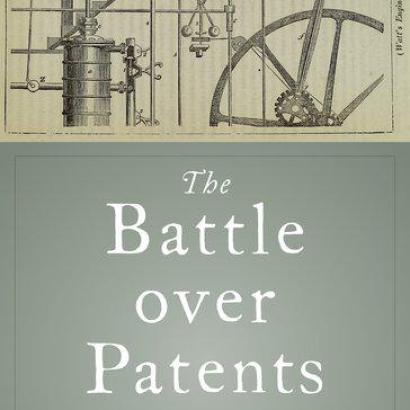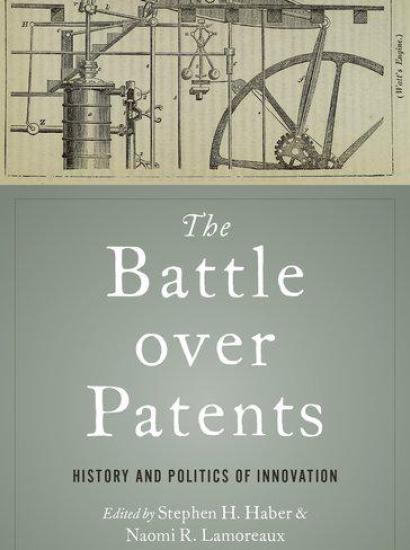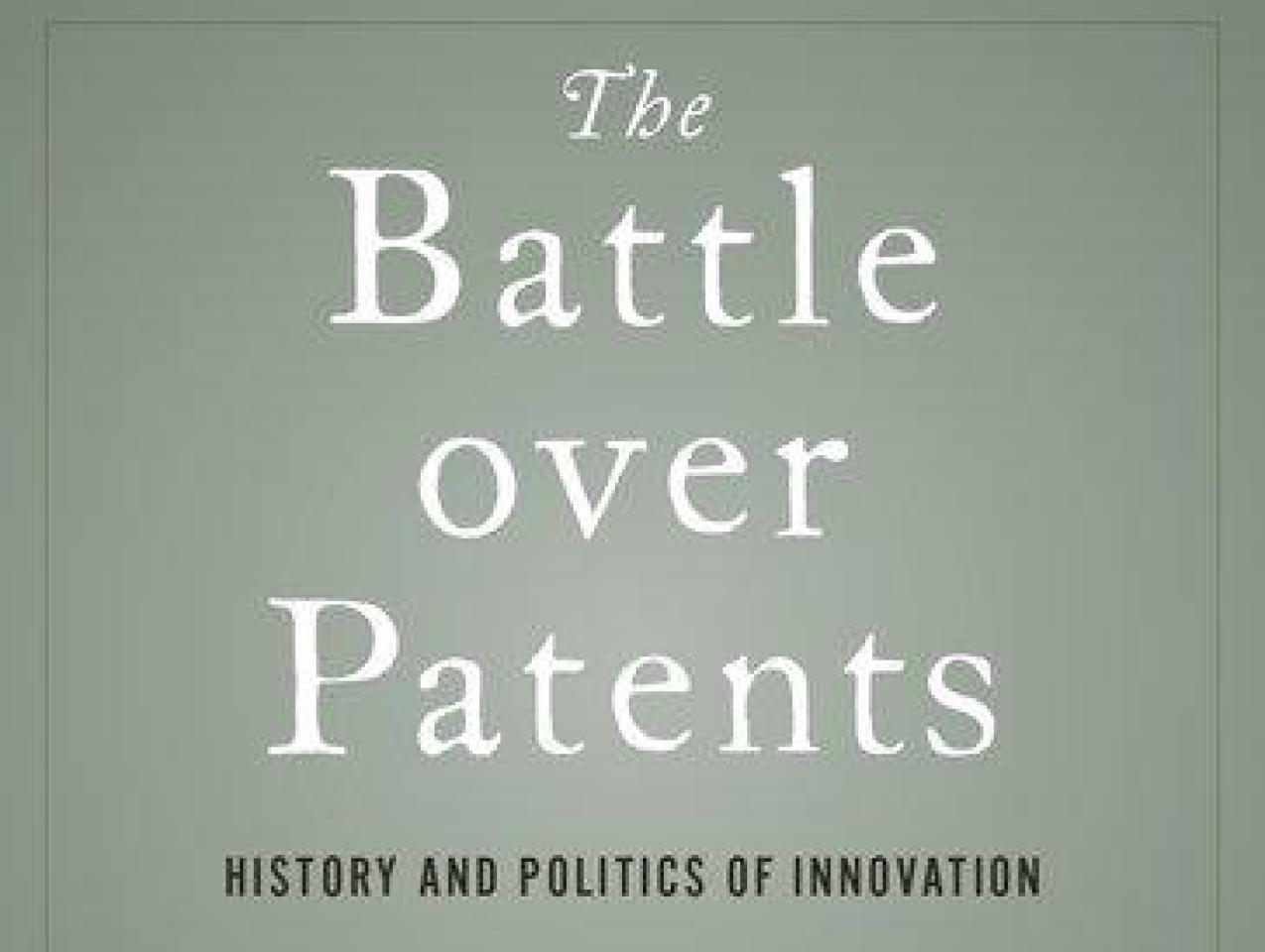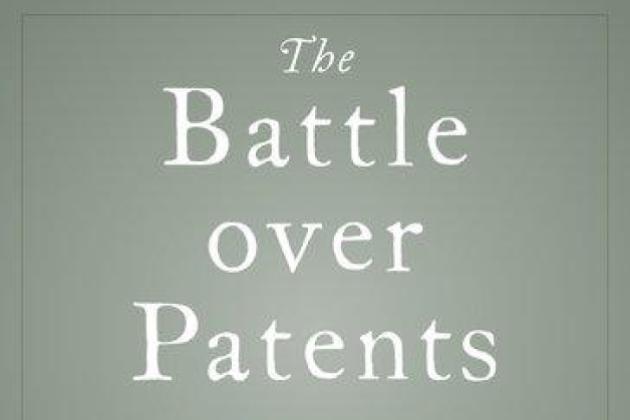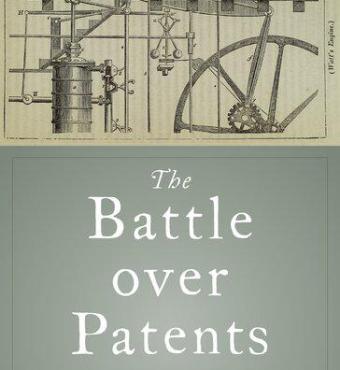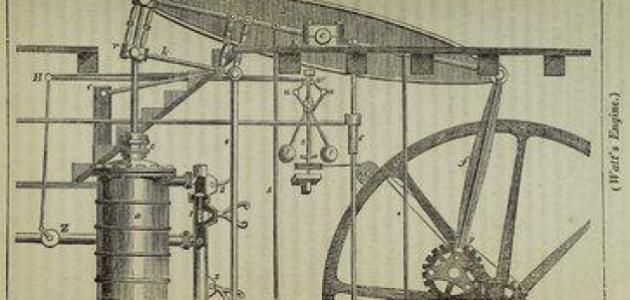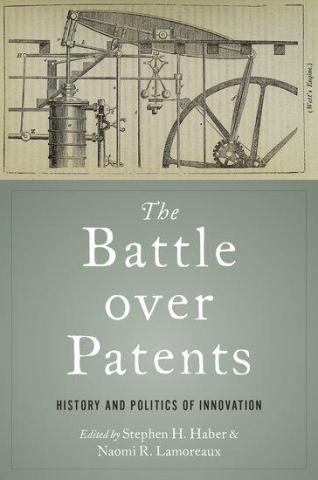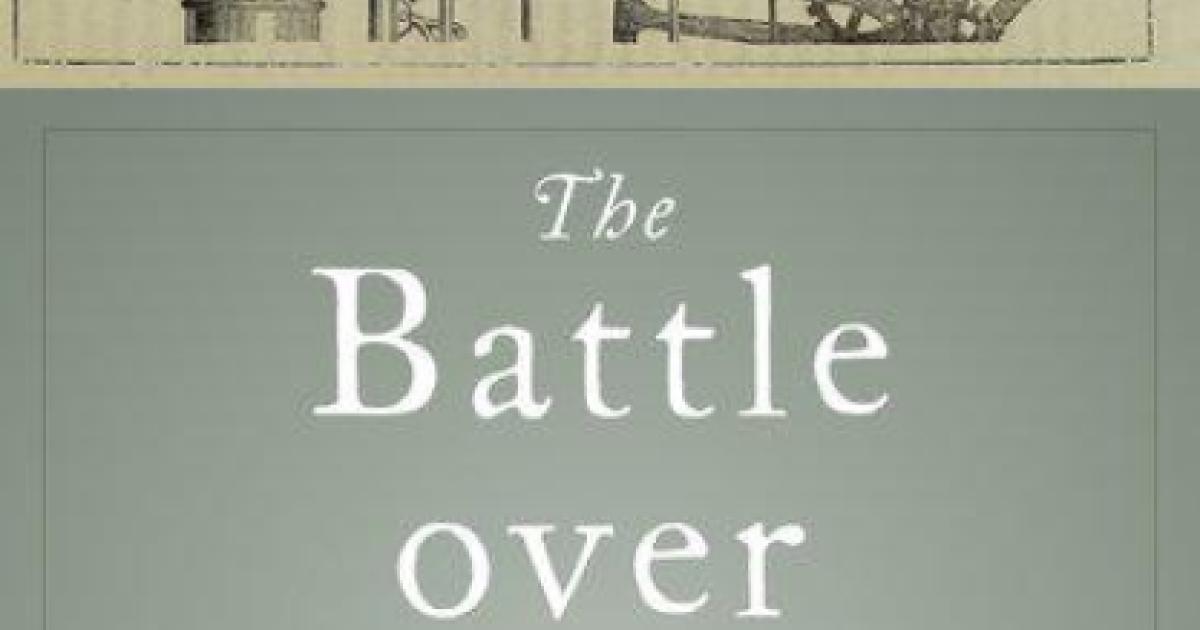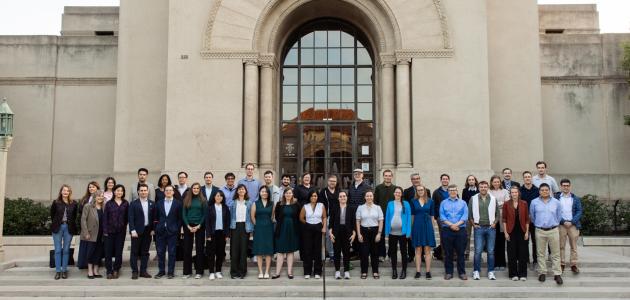In this interview, Hoover Senior Fellow Stephen Haber and Yale University professor of economics and history Naomi Lamoreaux discuss The Battle over Patents: The History and Politics of Innovation (Oxford University Press, 2021), a recently released volume they coedited that features essays from scholars around the world.
Haber and Lamoreaux describe the origins of the United States’ patent system and how it led to a boom in innovation and unprecedented economic growth beginning in the nineteenth century. The two scholars explain that the genius behind the system is that it enables inventors to specialize in discovery and innovation and sell the rights of their patents or license them to others, from whom they can collect royalties on the sale of manufactured products.
They assert that while the system isn’t perfect, critics are incorrect to accuse patent holders of holding a monopoly over product ideas. Patents rarely prevent substitutes from emerging. In fact, under patent law, inventors are required to publish the details of how they developed their specific product. Thus, the patent system encourages other inventors to improve upon protected products and for competitors to design around them. This is demonstrated by the fact that goods such as consumer technology products have not only become more advanced since the first personal computers in the 1970s but also significantly less expensive.
Haber and Lamoreaux maintain that it is usually firms at the end of the production chain that are accusing those at the top—who hold patents on various technologies—of behaving as monopolies. These downstream firms, they argue, are nevertheless adhering to their fiduciary duties to shareholders by using “every arrow in their quivers” to reduce costs.
Will you describe the origins of this project?
Naomi Lamoreaux: I think the simple answer is that we were just incredibly frustrated with the historical claims that were made in much of the literature about patents. We had to set the record straight. For example, there is a claim that the French government bought out Louis Daguerre’s patents for early photographic technology, putting it in the public domain and thus enabling it to spread freely throughout the world. In fact, that claim is completely wrong. As one of our authors, Zorina Khan, has shown, this was a classic case of rent seeking. There was no French patent to buy out, but Daguerre threatened to sell the technology to a foreign government. Subsequently, he secured an English patent under a different name, but that didn’t prevent photographic technology from continuing to advance.
Stephen Haber: From 2013 to 2018, I directed the Hoover institution’s working group on innovation and prosperity called “IP Squared.” What motivated the creation of the working group, which gave rise to this book, is something Naomi explained, which is that if you read the history about rapid economic growth around the world since 1800, it would be very hard to make the case that patent systems held back innovation and prosperity.
Every country that became innovative also adopted some version of the United States’ patent system. That includes England, which first pioneered patents as tradable property rights and would later reform their laws in line with the United States. It includes Japan and Germany, which in the 1870s and 1880s, respectively, adopted strong patent laws. It includes a lot of other European countries which based their patent laws on Germany’s. This movement gained momentum around the world as countries thought about ways in which to incentivize innovation. The patent system has provided inventors with intellectual property rights that allowed them to create a market in new ideas. Without protection of their property rights, downstream firms could free-ride, thereby undermining the incentive to devote time and resources to inventing.
In the last two decades, mostly within law schools, there has emerged an alternative view of patent systems. That alternative view has claimed on the one hand to be rooted in a mainstream economic theory and on the other hand to be based on the historical record. Hoover IP Squared examined both claims. In a series of papers I wrote with research fellow Alexander Galetovic we determined that the claim of connection to mainstream economic theory was false; the theory underpinning much of the anti-patent literature is ersatz. In The Battle over Patents we turned our attention to the historical record. Our goal was not to defend patent systems. The goal was to demonstrate, warts and all, what patents did and did not do in the history of the last two centuries.
One of the main themes of this book is that imperfections exist in any system designed by human beings for the obvious reason that human beings are not angels. They will use every arrow in their quivers to gain a competitive advantage. Nevertheless, for all of its imperfections, the American patent system has been the envy of the world, which is why other countries copied it
One of the things we came to understand is that the American patent system worked so well because it interacted with other laws and fundamental institutions. Tradeable intellectual property rights required a government to write a patent law, a bureaucracy to maintain a registry, and courts to adjudicate disputes. For the laws to be effective in incentivizing innovation, however, bureaucrats had to be diligent and honest, courts had to make decisions based on precedents and facts, and the government had to be constrained from arbitrarily amending the patents. These conditions were met because of governance technologies such as an independent judiciary, separation of powers, and electoral suffrage.
Will you talk about the historical origins of the US patent system? What makes it different than other systems that preceded it?
Stephen Haber: The idea of a patent of invention goes all the way back to medieval Venice. The concept was to grant a privilege to an individual to exercise a monopoly.
In 1624, the British adopted a statute of monopolies which was intended to limit the king from granting monopoly privileges without parliamentary approval and thus prevent abuse of this practice. In the volume, Sean Bottomley of Northumbria University writes about how in the eighteenth century British jurists began to interpret the law about monopolies in ways that increasingly defined patents not as a monopoly, but instead as a property right that could be traded if inventors met certain conditions, including one in which they were required to divulge the process behind their work so that when the patent expires, other people could use it.
In late-eighteenth-century Great Britain, an active market for patented inventions evolved. There were people who specialized in inventions and other people who specialized in financing them. There was also a third group: people and firms that used those inventions. Matthew Boulton and James Watt's famous steam engine represented this latter variety. Boulton and Watt permitted other engineers to use their design in exchange for royalties calibrated to the savings on fuel. This system turned out to be tremendously successful and, according to Bottomley, was an essential requisite of the British Industrial Revolution.
The only property rights that are specified in the United States Constitution are patents and copyrights. The provision said that Congress is supposed to “promote the Progress of Science and useful Arts, by securing for limited Times to Authors and Inventors the exclusive Right to their respective Writings and Discoveries.” The first patent act passed in 1790 imitated the British system, though it simplified the process for inventors and reduced the costs of obtaining a patent to 5 percent of that in Britain.
Naomi and her coauthor, Kenneth Sokoloff, who was also my dissertation adviser, have authored numerous articles about this topic. The original US system set off a boom in invention in America. The laws were then revised in 1836 to require detailed specifications of product concepts. In 1851, Great Britain hosted the Crystal Palace Exhibition, in which countries around the world demonstrated their industrial achievements to each other. The British were impressed with the American delegation. How could this former colony, these ruffians, have invented all this cool stuff? In the following year, the British wrote a patent law that lowered the cost of the patent process for inventors.
Naomi Lamoreaux: When the US patent system was established, it provided the authority for examining patents to a committee of US cabinet officials. Thomas Jefferson, then the secretary of state, bore most of this burden because he was a specialist in technology. He was very quickly overwhelmed, so they dropped that examination requirement very quickly. In 1793, a new law was passed that created a registration system more like the British one, but simplified and cheaper. The 1836 act is important because it reinstated the modern patent office with a formal examination system. This formal bureaucracy was able to examine patent applications for novelty. Its imprimatur on legitimate innovations enabled the value of patents to soar.
In mid-nineteenth-century Britain, the cost of a patent was about four times per capita income. In the United States, it was only about thirty dollars, which was less than a month's wages for an ordinary worker.
Will you describe how—because of the patent system—innovation soared in the United States?
Naomi Lamoreaux: The patent system spurs innovation in multiple ways. It creates the ability for an inventor to protect him- or herself against people who would free-ride on their discoveries. That protection is an incentive to innovate because inventors would otherwise be less likely to invest significant resources in their discoveries and innovative processes.
There are many other ways in which the patent system, as it exists in the United States, stimulates invention. One is that inventors are mostly people who want to solve problems and profit from their solutions. A patent gives them a way to specialize in producing innovative ideas and profit from them at the same time. As Steve suggested earlier, you can sell off the rights to your ideas, as well as license them to others. An inventor can specialize in generating ideas and not have to be the businessperson who invests in a factory or spends his or her life trying to build up a customer base. Those tasks can be assumed by other people. The patent system has also built up a repository of information about technology. Shortly after the 1836 legislation, journalists started producing publications about recently patented inventions. Inventors from all over the country and the world read these publications. They learned about what people had accomplished and that suggested things that they could do as well. It expanded people's sense of the possible.
Stephen Haber: There are two important points that Naomi has made, and I want to underscore them. One is this: that the patent is not a secret. You must reveal what your invention does and how it does it, so that someone else can build upon it. If there was a world without patents, the only way to protect your inventions would be to keep everything secret. The problem with keeping everything secret is that there wouldn't be any cumulative invention. The other point that Naomi made was that the patent enabled inventors to specialize by selling or licensing their work product.
Here is an example. This interview is being recorded on Zoom via three separate devices which, I assume, are made by different manufacturers. What allows the three of us to communicate across space very seamlessly is that there are patents in the technologies, both in the hardware and the software. Dell, for example, does not develop most of the patents that make its products work. It licenses patents from firms like Nokia, Ericsson, Qualcomm, InterDigital, and others that most people have never heard of.
If the patent system has spurred all this innovation, where do the critics come in?
Stephen Haber: One of the points we make in the book is that in the design, manufacturing, and sale of any product, there is a firm at the end of the production chain that is earning the consumer revenue. When you purchase your laptop at a store or online, these household names, like Apple or Dell, are collecting those revenues. But there is a whole production chain that involves numerous upstream firms. Some make the glass for the screen. Some of them make the central processing unit. Yet others design the hardware and software that allows the audio and video information to be compressed and shared in real time. Patents cover these requisite technologies.
All these companies have a claim on the revenues earned by the downstream firm that packaged and marketed the product, and they are going to fight over those revenues using every arrow in their quivers—including the laws and regulations governing the patents themselves. Thus, the “battle over patents” should really be understood as an inter-industry fight between firms at the end of a production chain and the upstream firms who developed the technologies that make those products work.
One of the sources of friction, which has been the case since the nineteenth century, is that firms at the end of production chains like to claim that the upstream firms own patents for technologies that anyone could have thought of. The patents should therefore be priced accordingly, which is to say at close to zero. The downstream firm therefore has an incentive to argue that the price being demanded by the upstream firm is excessive and reflects a monopoly held by the upstream firm. Hence, the system needs to be reformed. This fight has been going on in the United States since the nineteenth century, which is why we call our book The Battle over Patents.
Naomi Lamoreaux: Sometimes the fight spills over into government and to the public. For example, in the nineteenth century there were people called “sharks,” in the parlance of that time, who sued farmers for allegedly violating patent law. Let’s say a farmer bought barbed wire that was produced by a firm which did not have a proper license to use the patent for that kind of barbed wire. Rather than sue the manufacturers, some of the patent holders in the nineteenth century went after the farmers who used the barbed wire. When the “sharks” took legal action against the farmers, a large amount of ill will was created against the patent system.
Today many voters—and politicians— feel that the costs of prescription drugs are too high because of patents. This is an example of a struggle over surplus value spilling out into politics and public opinion. In fact, what causes drug prices to be so high has a lot to do with regulatory regimes rather than patents per se, but it is often politically convenient to blame the patent system.
Stephen Haber: Politicians are also in a business. They are in the business of winning elections and gaining power. Some politicians see an opportunity to degrade the patent system as a very inexpensive way for them to market themselves. Human beings have had a long history of denouncing others who hold property rights and have often been successful in these efforts.
Playing devil's advocate, might the loosening of patent restrictions result in increased competition, lower prices, and higher quality products?
Stephen Haber: Patents do not grant monopolies. This is one of the points Naomi and I make in the introduction to the book. A patent grants a property right. Here is an example. I have a monopoly on the use of my house. It is mine. I can exclude anyone I would like from entering. However, I don't have a monopoly on all housing. A patent is the same. Let's say I have a patent on some process, like the manufacturing of ball bearings. My patent must reveal exactly what that process entails. That allows someone else to come along, look at my patent, and say, "Ah, but I can think of another way to make ball bearings that doesn't use any of Haber's technology, and invent around his patent and make it irrelevant." And so, the patent system encourages competition. If you, on the other hand, created a product that nobody else could backward engineer, you would not actually take a patent out on it at all. You would have a monopoly on it just by keeping the process secret.
If you have ever been to a baseball game and bought a hot dog and a beer in the stands, you have been subjected to monopoly pricing. The monopoly comes from the fact that you can’t substitute. You’re not allowed to bring your own barbecue into the ballpark and start grilling hot dogs. Security will escort you to the door. That means that you pay three times more for that hot dog than had you bought one in a competitive market. If patents generated such monopolies, the prices of the devices that the three of us are using to communicate would be astronomically high, since their manufacturing would involve hundreds of firms, each exercising their own monopolies.
We do not, however, pay ballpark-type prices for laptops, tablets, and smartphones. In fact, the prices for all three of those products have fallen on the order of 10 percent per year over the past decade. Naomi and I used something called a typewriter early in our careers. The first computers, which we were thrilled to get, had minimal capabilities and were priced as high as $5,000. This was in the mid-1980s. In today's dollars, it would translate to roughly $10,000. What is the price of today’s much more powerful laptop computer? About $400.
Naomi Lamoreaux: It is also important to bear in mind that for a patent to have value, an inventor must be able to convince people that the idea is worthwhile. A patent needs to be worthwhile to investors, to other firms who want to purchase the license to use it, and to consumers who use its product. If there is no effort made to create that value, the patent is worthless.
Will you tell us what role patents play in modern pharmaceuticals?
Stephen Haber: If you think about the pharmaceutical industry, there are only a few very big companies producing frontier pharmaceuticals. They tend to be in places with patent systems, particularly the United States, Britain, and Germany. It is not an accident that the places where frontier vaccines and therapeutic interventions are developed are the places with sophisticated patent systems, where inventors can protect their intellectual property. Billions of dollars get invested in the development of a new pharmaceutical. If anybody the next day could come along and just copy what these scientists were able to accomplish, then the incentive to develop that pharmaceutical in the first place would vanish and no one would do it in the future.
Naomi Lamoreaux: Pharmaceuticals are a good example of the division of labor that patents enable, because there are many small firms that develop new therapies with the help of bigger firms. For example, BioNTech is a small R&D company. For the COVID-19 vaccine, BioNTech developed licensing arrangements with big firms like Pfizer to develop the technique, usher it through the Food and Drug Administration approval process or the equivalent in the European Union and Great Britain, and market the final product. The other thing you saw with this recent vaccine development is that, again, substitutes develop all the time, and often quickly. There is not just the Pfizer vaccine; also available are vaccines manufactured by Moderna, Johnson & Johnson, AstraZeneca, and others around the world—such as in Russia and China.
We already have a lot of substitutes in this very rarefied world of modern technologies—even in these mRNA vaccines that are for the first time being brought to market.
How do you think the patent process in the United States can be improved?
Stephen Haber: I think that all humanly created systems can be improved. However, the first rule of public policy is, “Do no harm.” While I am of the view that the patent system could be improved, particularly by making it easier for patent holders to obtain injunctions against infringers, I hesitate to pontificate on all the ways in which it could be improved, because one must be mindful that any change will ramify through an entire system and could give rise to unintended consequences that may make existing problems worse, not better. Patents, like every humanly devised system, came about because very smart people have negotiated intensely over very long periods of time. What emerged is a system that has worked extraordinarily well, even if it has been watered down by courts and Congress over the past decade.
Naomi Lamoreaux: I share that view. Nonetheless, in The Battle over Patents we have some examples of modifications to the patent system that ended up being improvements. Christopher Beauchamp, professor of law at Brooklyn Law School, wrote an essay in the volume about the litigation explosion in the middle of the nineteenth century. People talk about a litigation explosion in the recent period, but it is miniscule compared to the amount of litigation over patents that occurred then. There were some simple modifications to the system that reduced much of that litigation.
Congress had contributed to higher amounts of litigation because it extended the terms of patents for particular inventors. Congress finally put a stop to the practice. A second reform addressed the issue of patentees having the ability to revise their claims ex post facto. Punitive measures could thus be applied retroactively against people accused of violating these revised claims. In fact, there was no way to know at the time that these people were infringing because the claims that they were allegedly violating had not been issued yet. Those kinds of cases give us some rules of thumb. If people are running afoul of the patent system through no fault of their own, then something about it needs to be reformed.
More generally, I think Steve's point is that, in all these fights, policy makers are being asked to take sides among interested parties. At the very least we should be—through serious empirical inquiry—probing those interests and trying to understand the consequences of biasing the law in favor of one group over another.
Stephen Haber: I will just build on the last point that Naomi made, which underscores why the Hoover Institution is so important. Hoover's mission is to conduct serious analyses of policies based on empirical evidence. It is an especially important social function of scholarship to be a disinterested party that simply inquires, "There is this fight. What are they fighting about? Let's try to understand it. And before we recommend doing one thing or another, let's dispassionately look at the facts." This function of Hoover is specifically important to the maintenance of a healthy society and economy.







